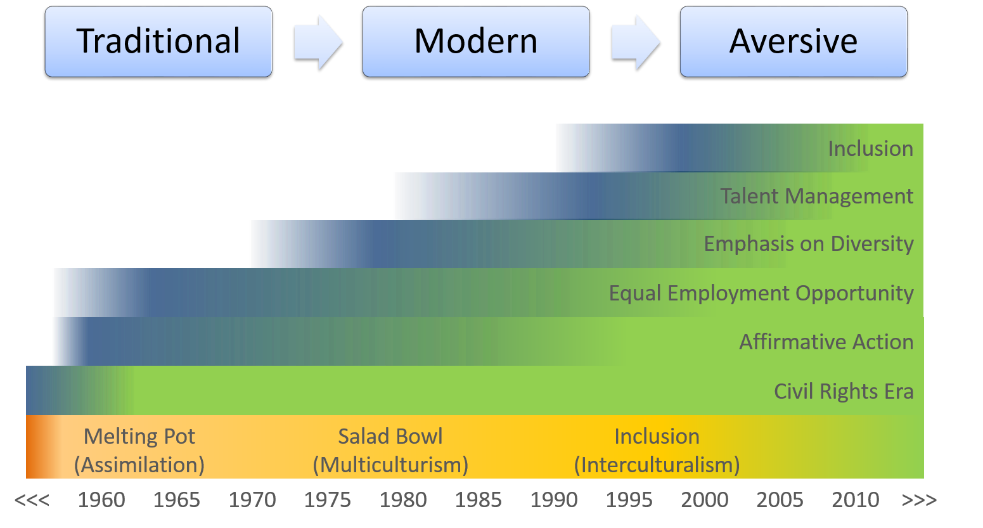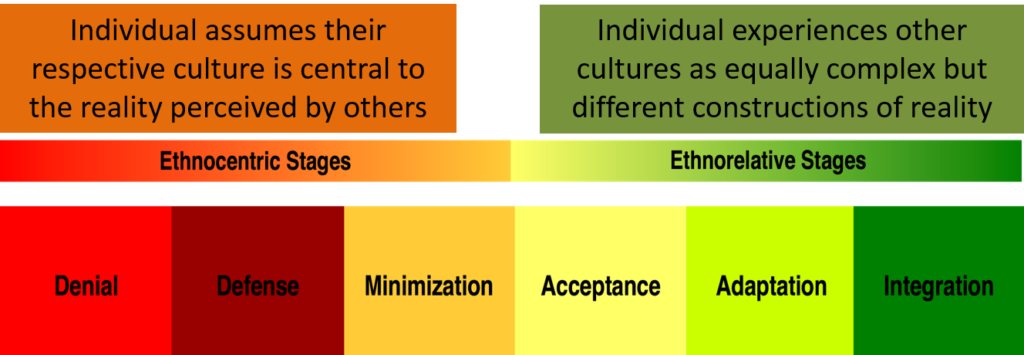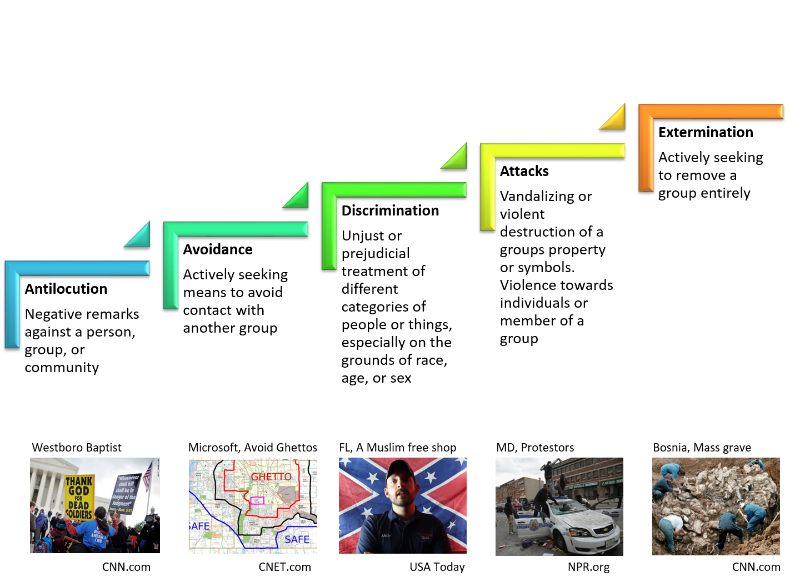
Acting on Bias
In this post we will explore how underlying VAB manifest into behavior.
A historical perspective:
We will discuss a historical perspective of bias and discrimination in America. [1]
Perhaps we have heard the description of American diversity as a melting pot or salad bowl.

| Figure 4 – History of Bias and Discrimination |
Experience the Difference:

The Bennett scale[2], also called the Developmental Model of Intercultural Sensitivity (DMIS), was developed by Dr. Milton Bennett. The framework describes the different ways in which people can react to cultural differences.
The scale is a continuum where at one end is ethno-centrism and at the other is ethno-relativism. The scale is divided into six “stages” of increasing sensitivity to the difference. By identifying the underlying experience of cultural difference, predictions about behavior and attitudes can be made and education can be tailored to facilitate development along the continuum.
- Denial of Difference: Individuals experience their own culture as the only “real” one. People at this position are generally uninterested in cultural difference or completely unaware of the difference. When a person becomes aware they will experience cognitive dissonance.
- Defense against Difference: One sees their own culture is as the most “evolved” or best way to live. This position is characterized by dualistic us/them thinking and frequently accompanied by overt negative stereotyping. Antilocution is commonly accepted and they will experience the difference as a threat.
- Minimization of Difference: The experience of similarity outweighs the experience of difference. People recognize superficial cultural differences in food, customs, etc., but they emphasize human similarity in physical structure, psychological needs, and/or assumed adherence to universal values. People at this position are likely to assume that they are no longer ethnocentric, and they tend to overestimate their tolerance while underestimating the effect (e.g. “privilege”) of their own culture.
- Acceptance of Difference: One’s own culture is experienced as one of a number of equally complex worldviews. People at this position accept the existence of culturally different ways of organizing human existence, although they do not necessarily like or agree with every way. This stage is characterized by eager questioning and discovery.
- Adaptation to Difference: Individuals are able to apply their expanded knowledge and behave in a variety of culturally appropriate ways. At this stage one has the ability to act properly outside of one’s own culture with some degree of confidence.
- Integration of Difference: At this stage, one is confidence moving in and out of other cultures while sharing various world-views. A person who has reached this stage will see themselves as being on the fringe of a culture, not central to it.

Figure 5 – As a person transcends through the Bennet Scale they will experience a shift in their Bias over time.
Allport’s Scale
Next we will discuss the scale of discrimination and hate. We use Allport’s Scale[3] to explain the manifestation of prejudice in a society. In 1954, psychologist Gordon Allport devised a system of five graduated behaviors to explain the progressive nature of discrimination:
- Antilocution: Negative remarks against a person, group, or community
- Avoidance: Actively seeking means to avoid contact with another group
- Discrimination: Unjust or prejudicial treatment of different categories of people or things, especially on the grounds of race, age, or sex
- Attacks: Vandalizing or violent destruction of a groups property or symbols. Violence towards individuals or member of a group
- Extermination: Actively seeking to remove a group entirely

Decreasing bias:
- Match community demographics
- Awareness
- Education and training
- Observance periods
- Model Behavior – self and others
- Enforcement of positive norms, policies, regulations, and laws
- Participation
- Legislation
- Media
- Challenge – statements and behaviors
- Change
- Advocate
[1] Virginia Cooperative Extension (ext.vt.edu)
[2] Learn more about Bennet’s Scale, en.wikipedia.org/wiki/Bennett_scale
[3] Learn more about Allport’s Scale, en.wikipedia.org/wiki/Allport%27s_Scale
